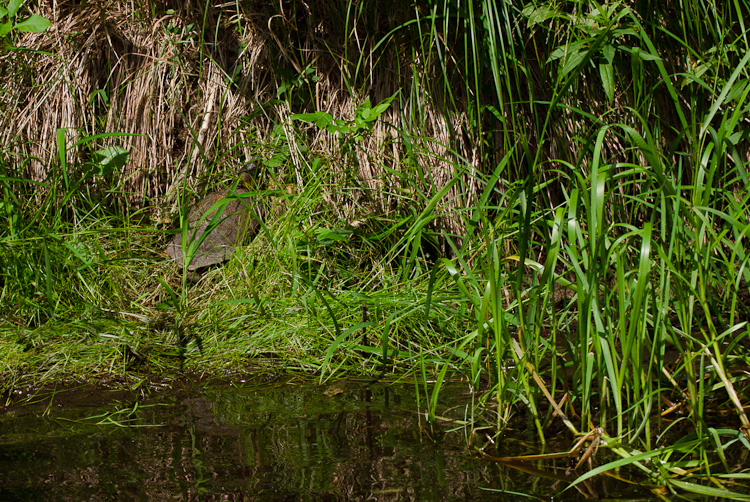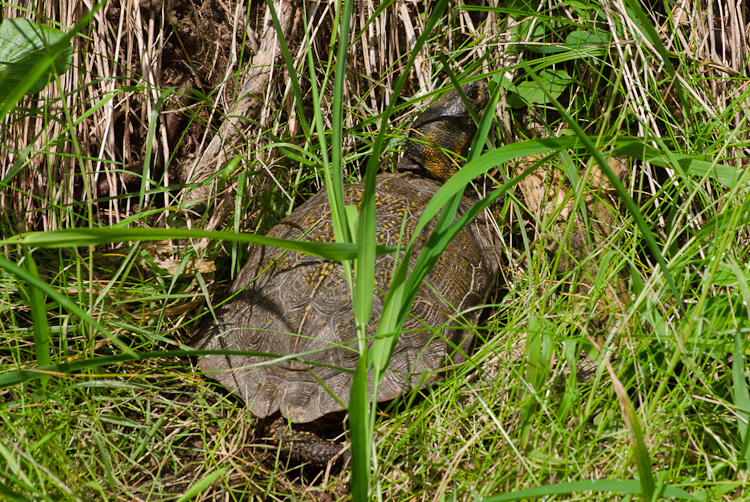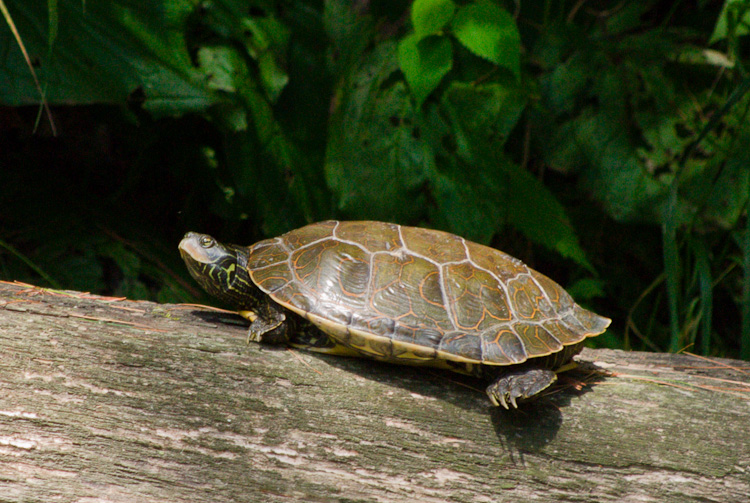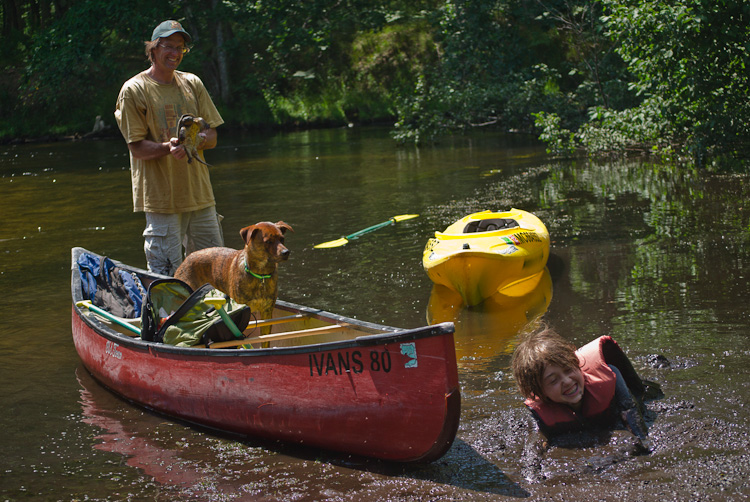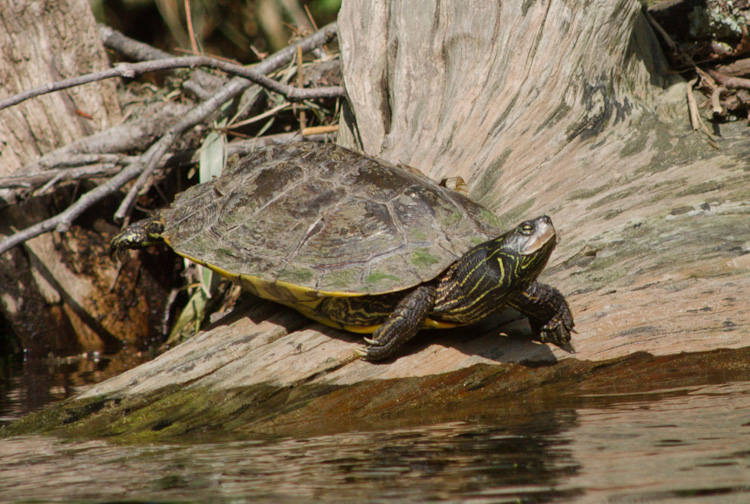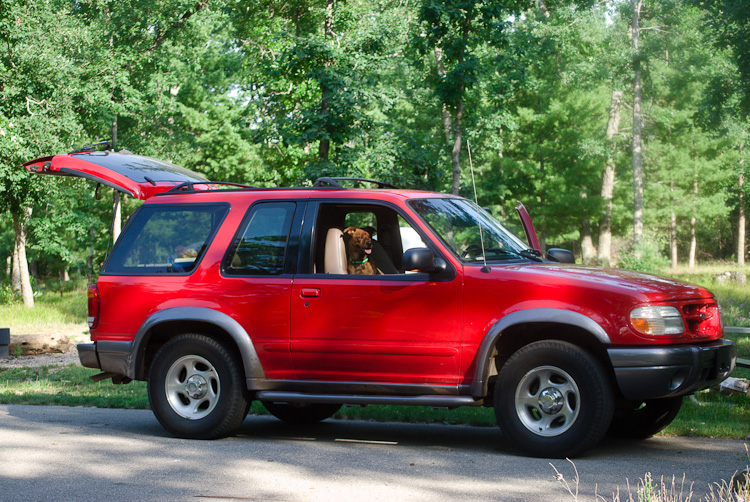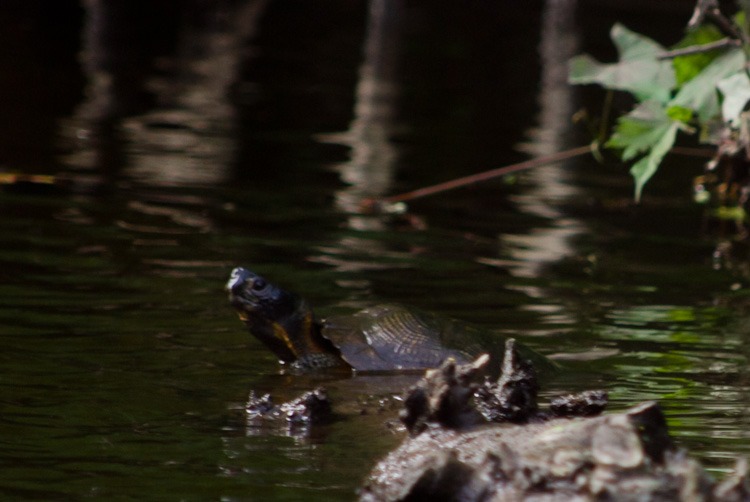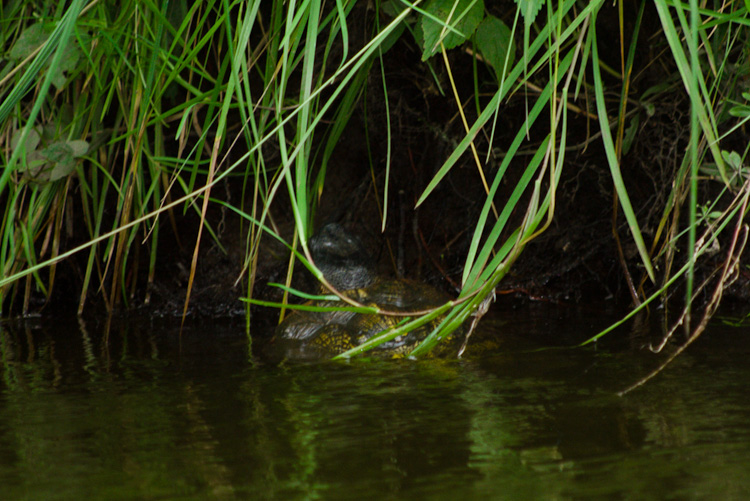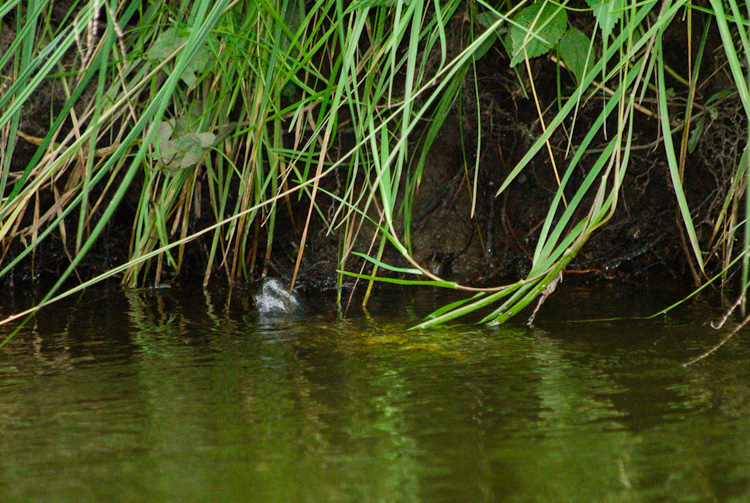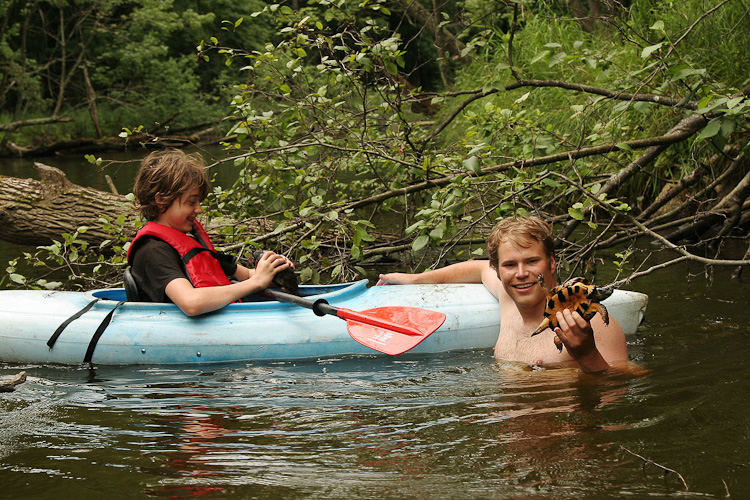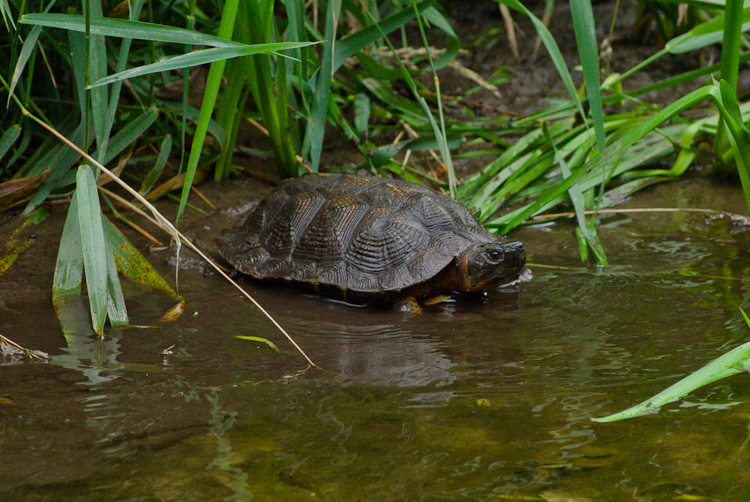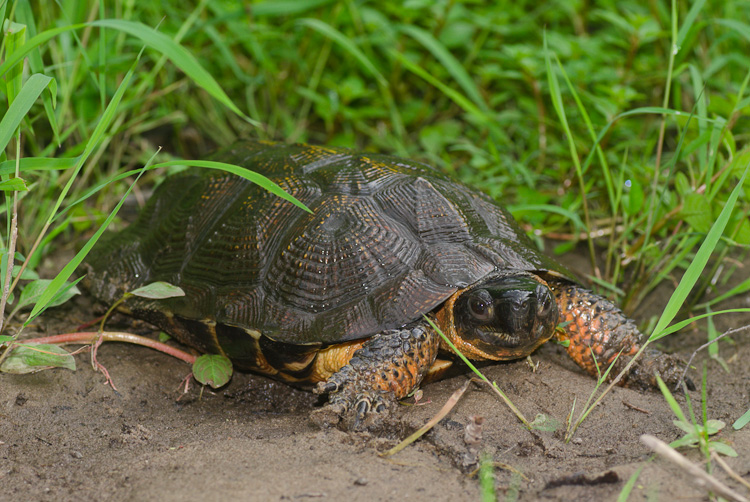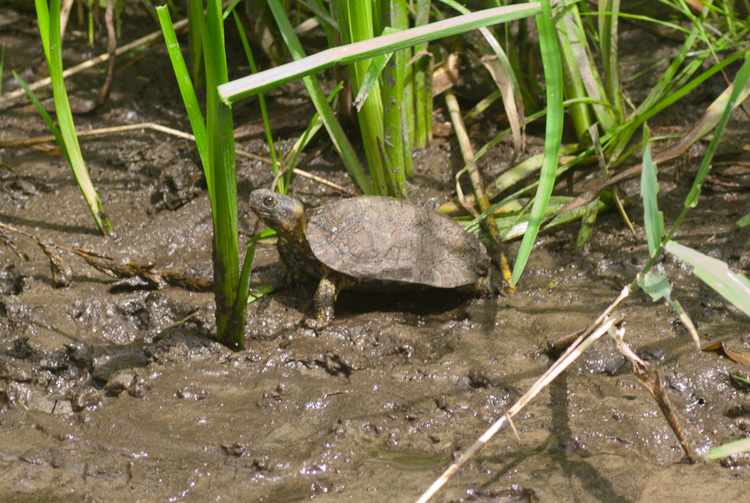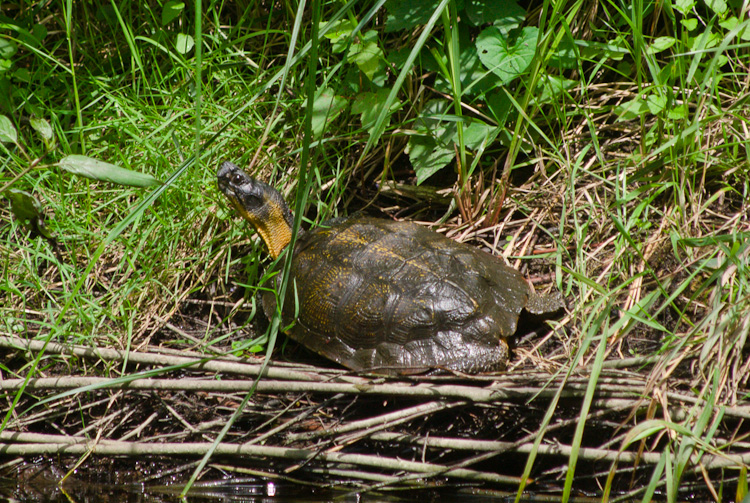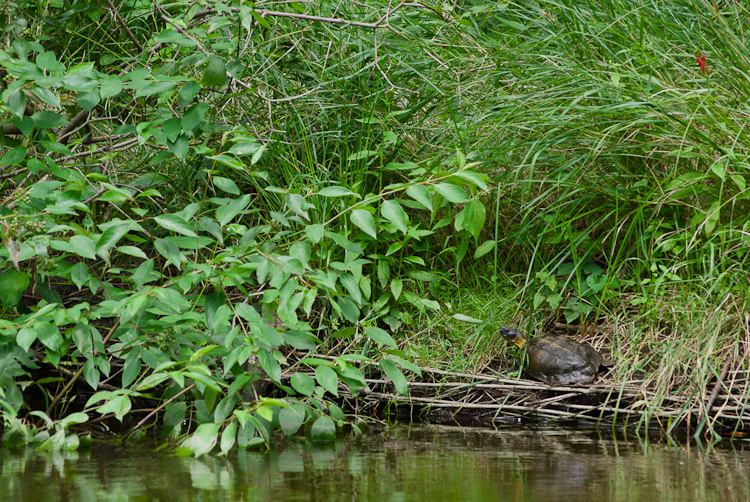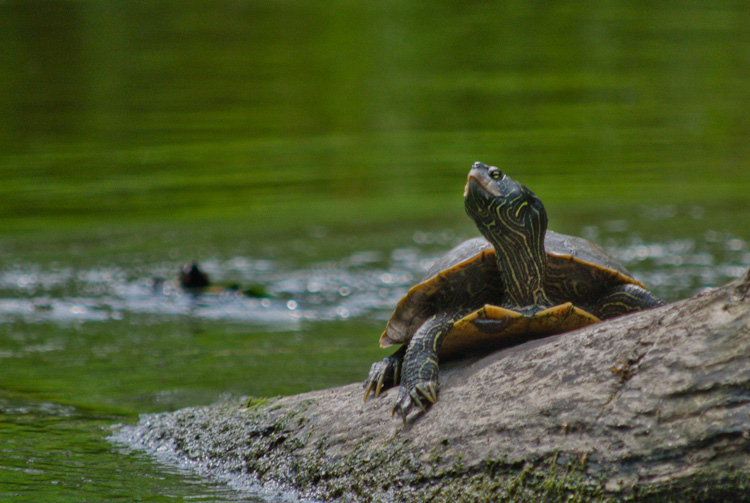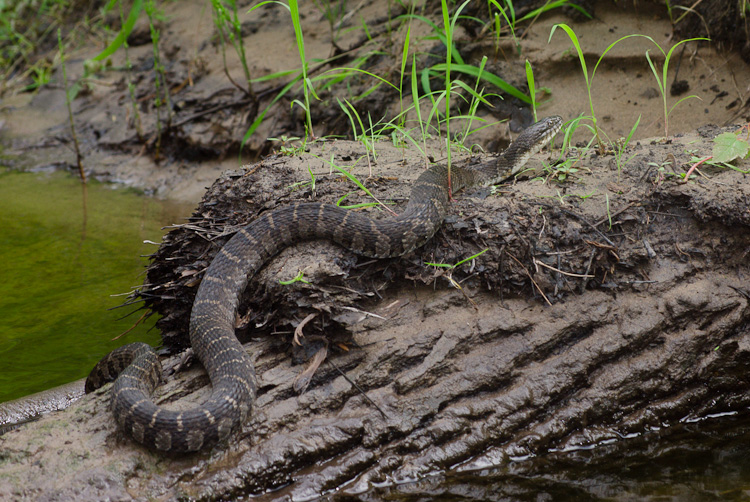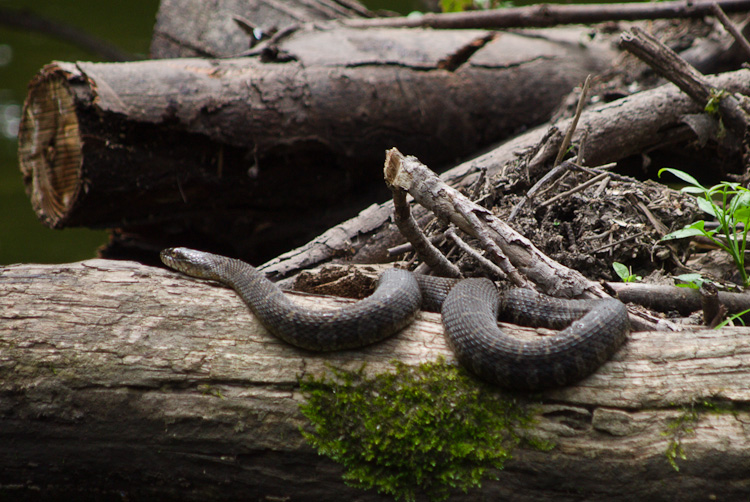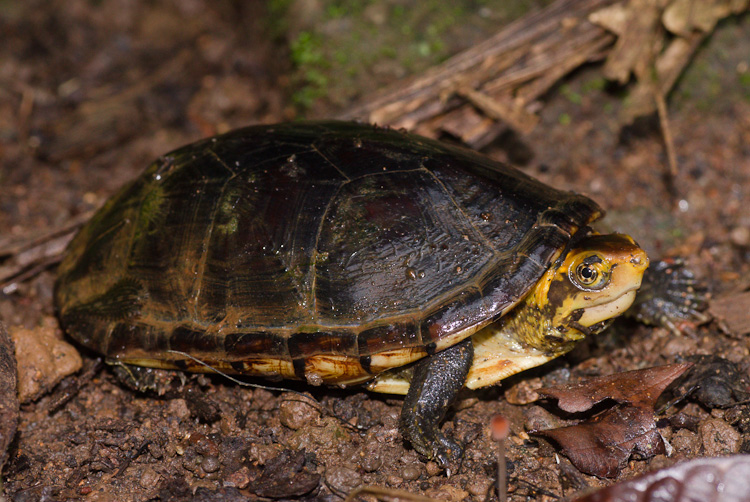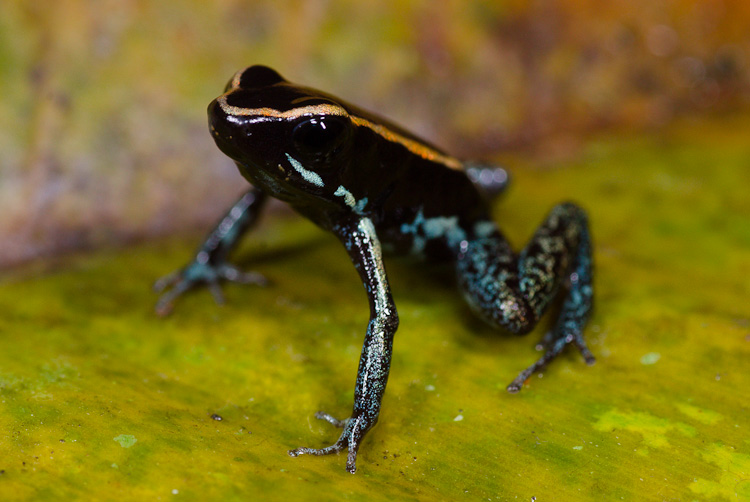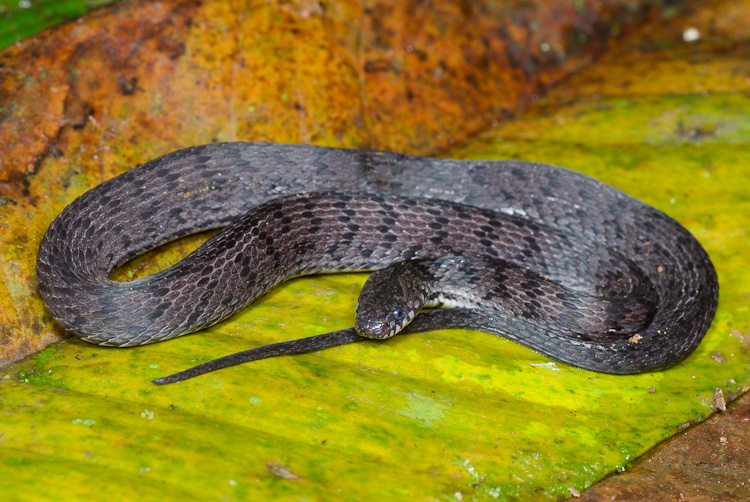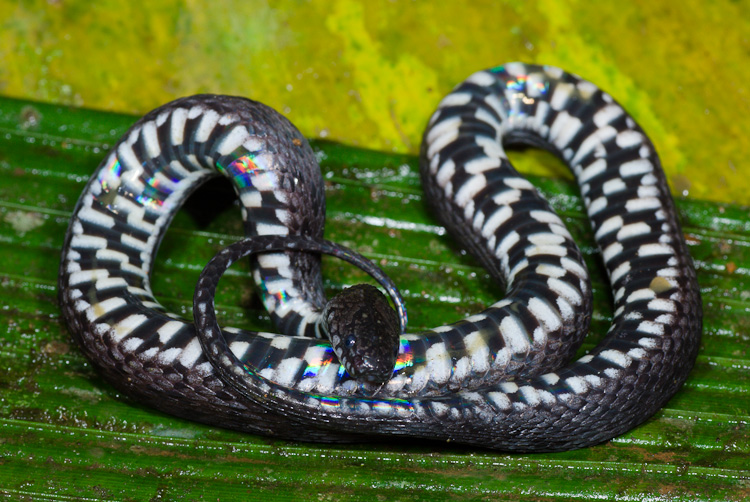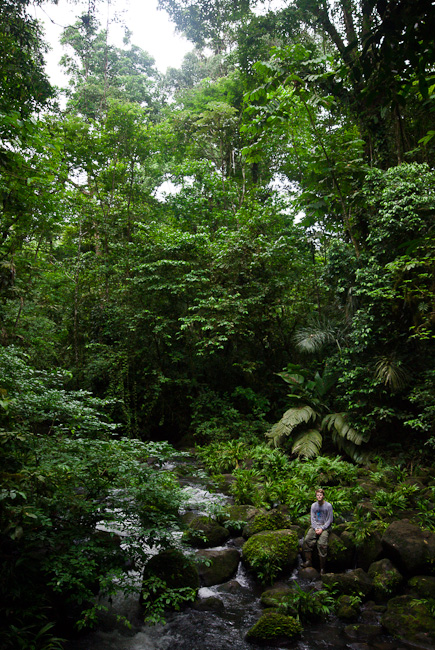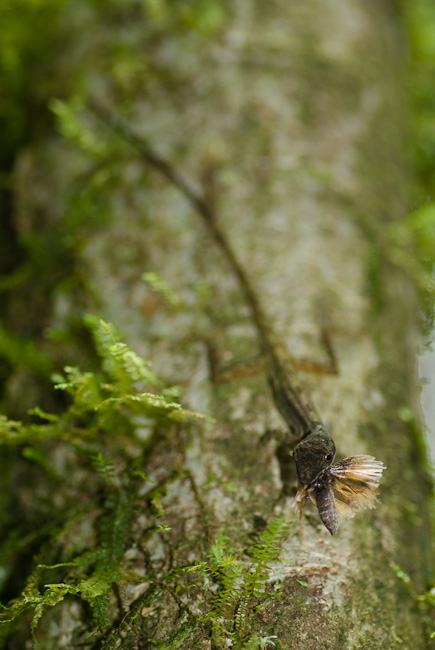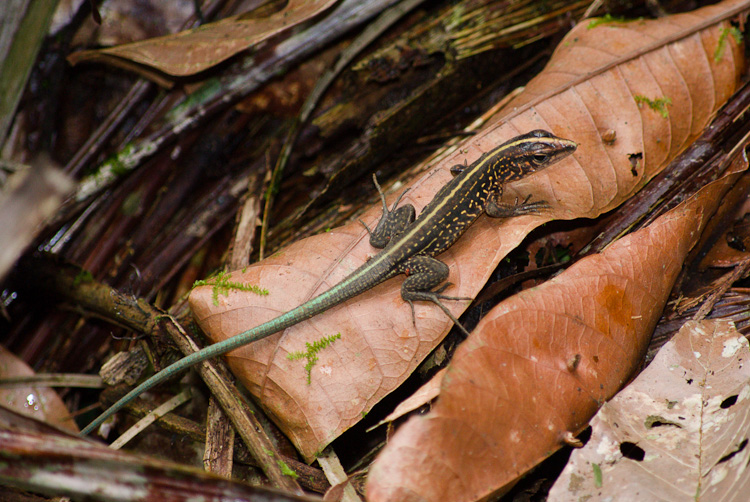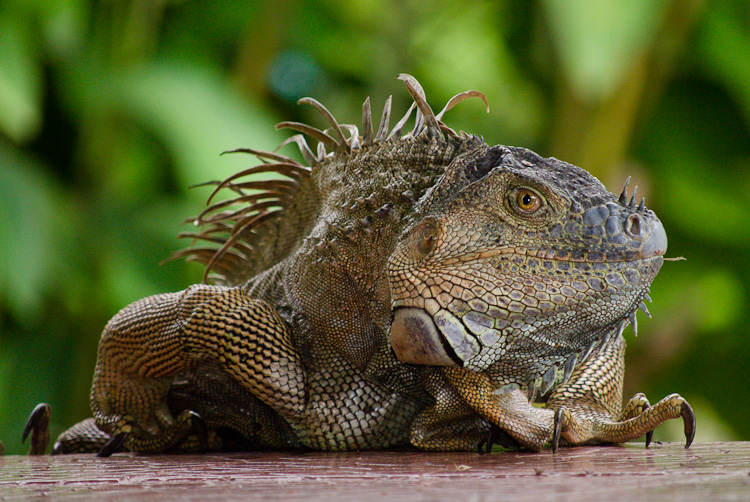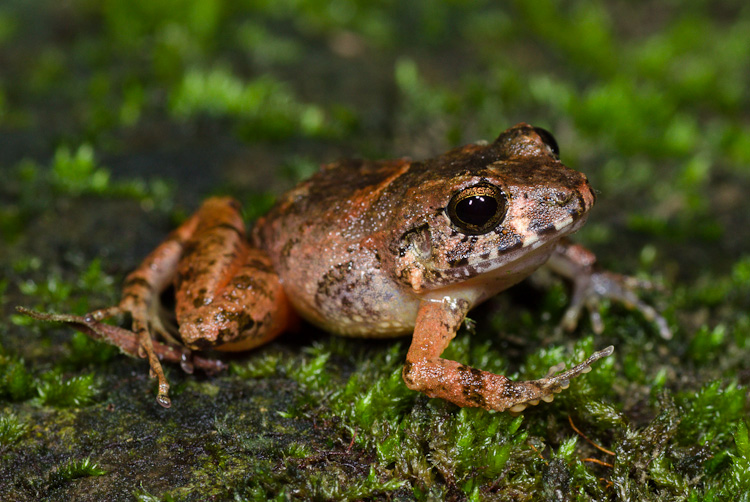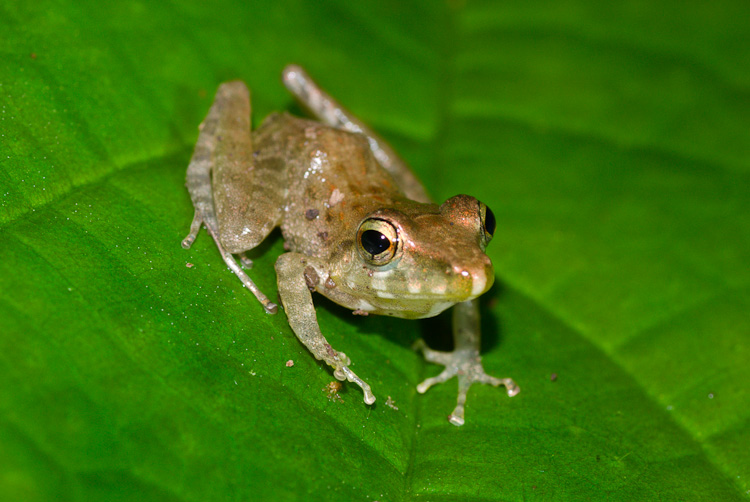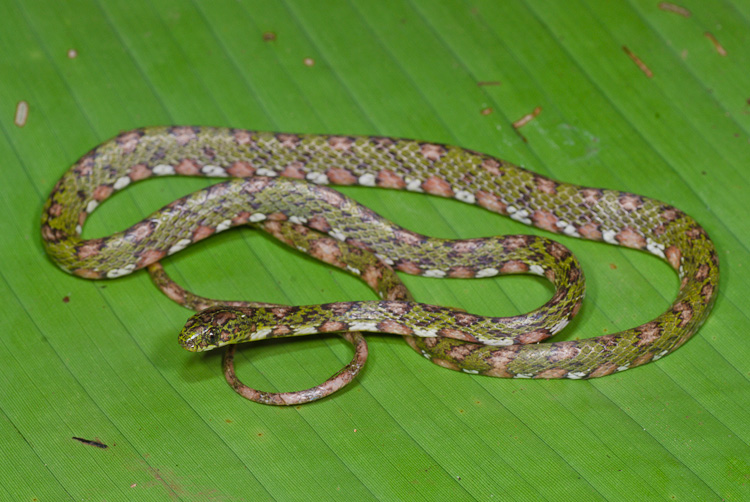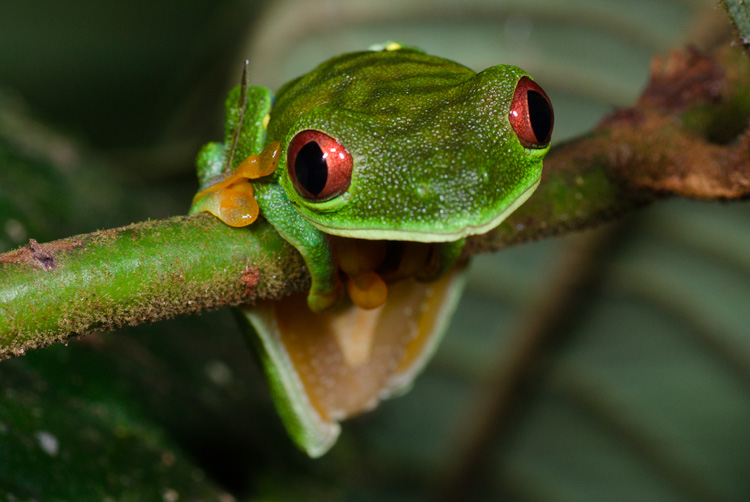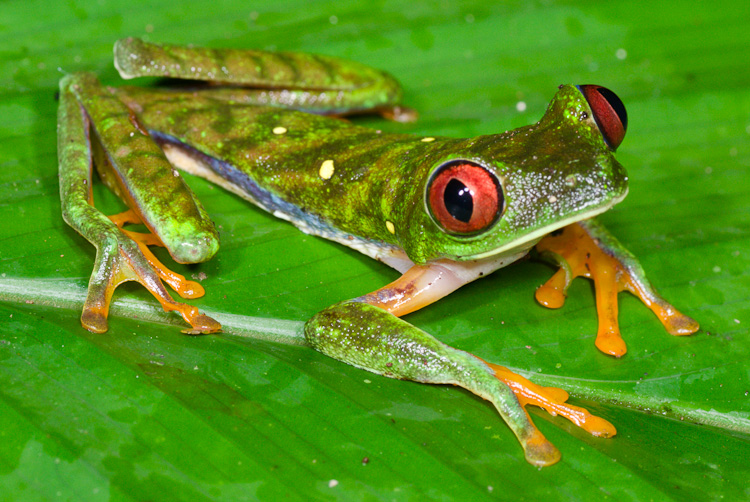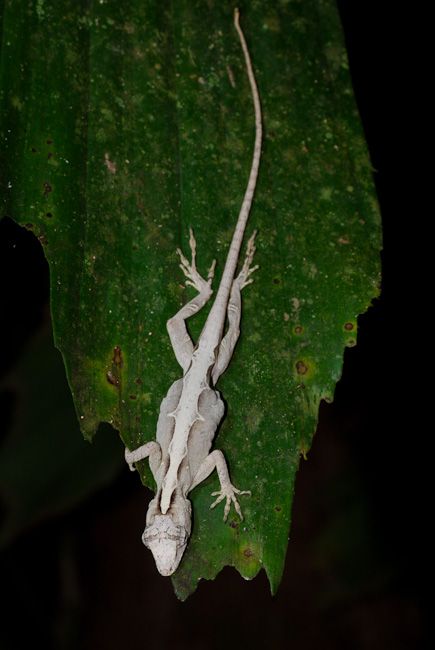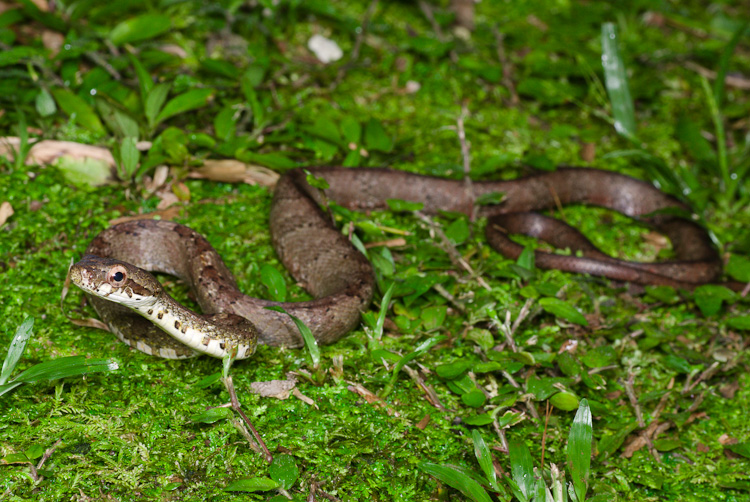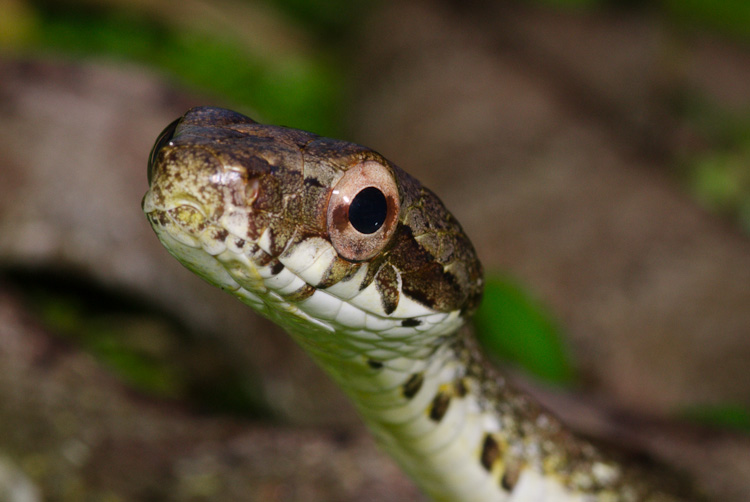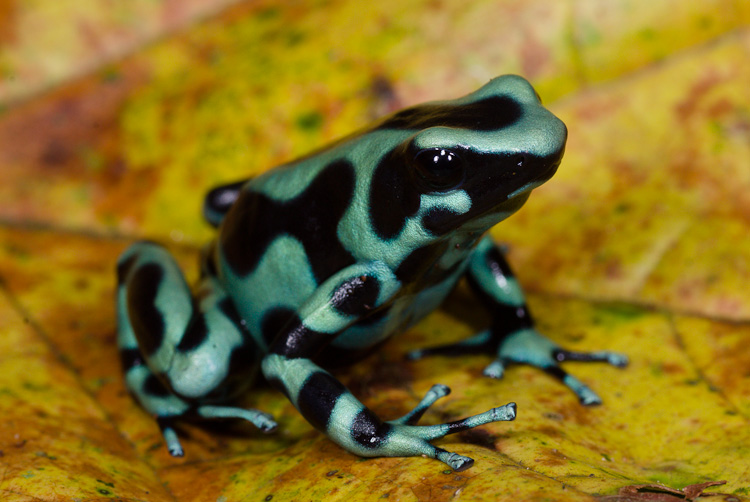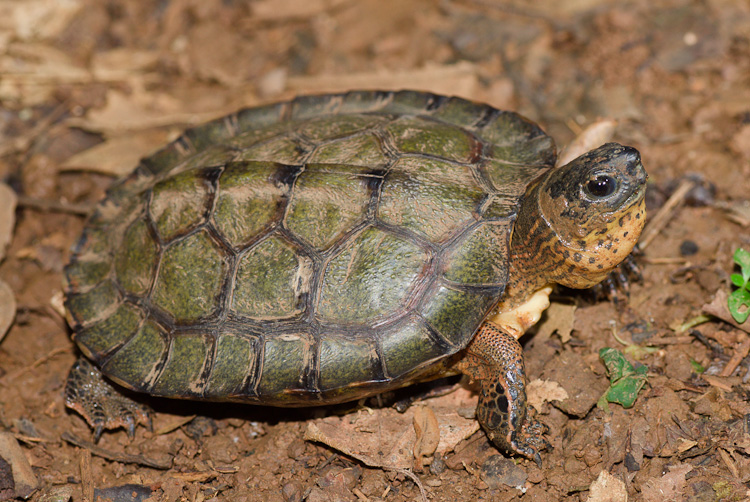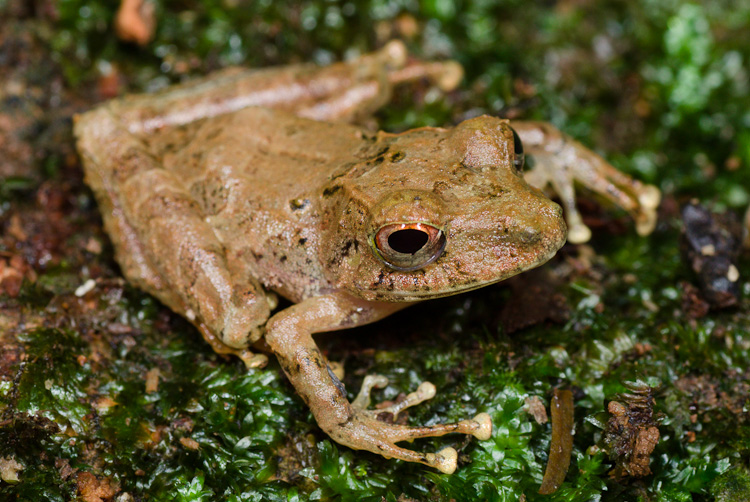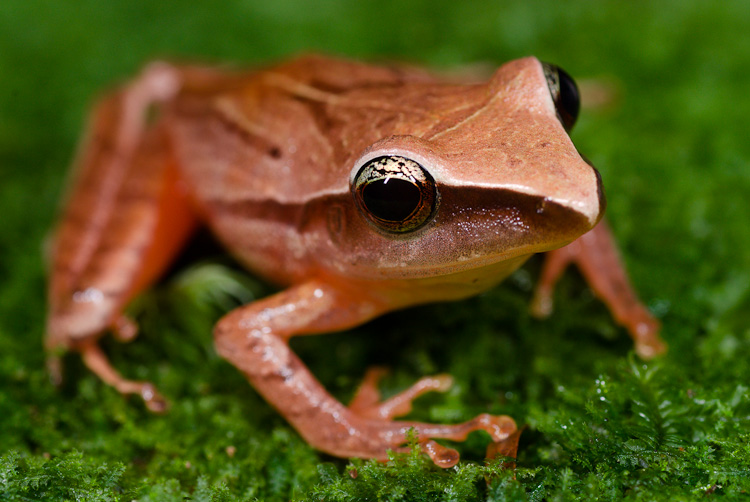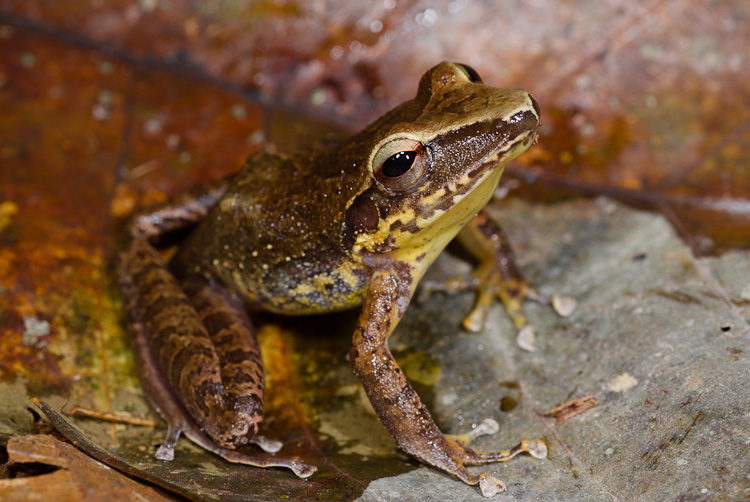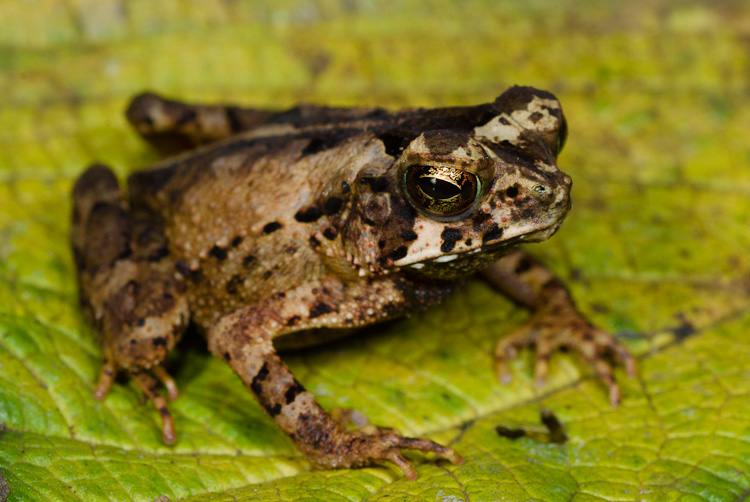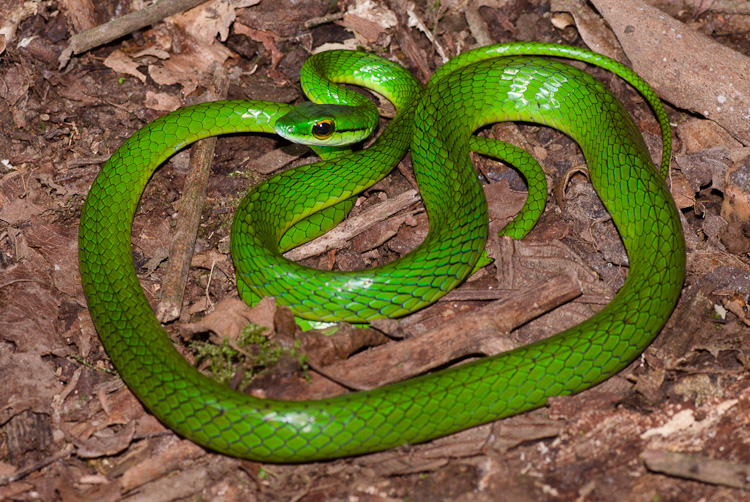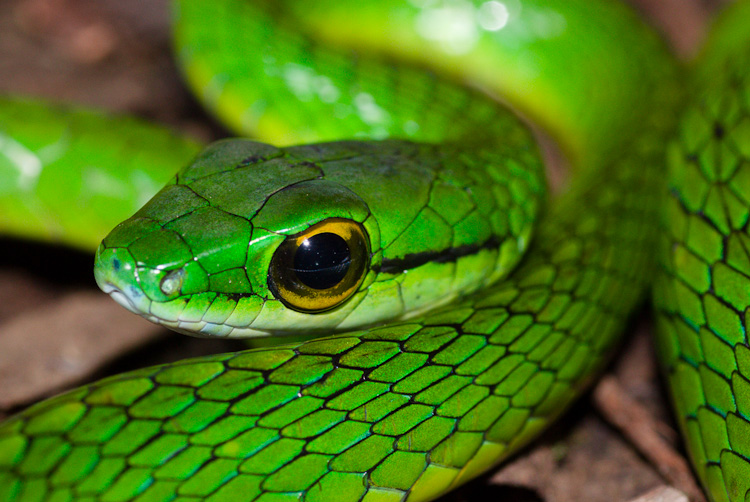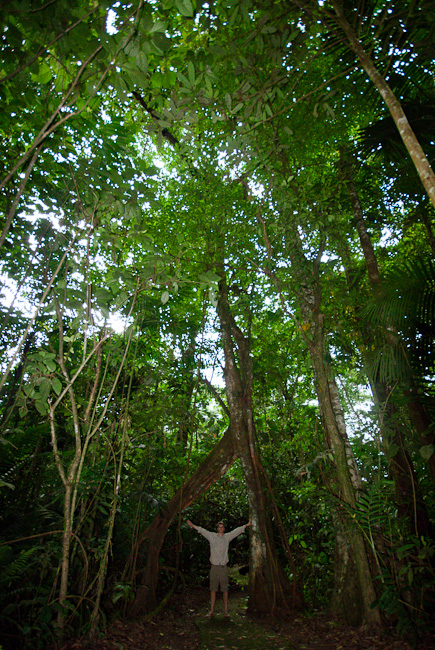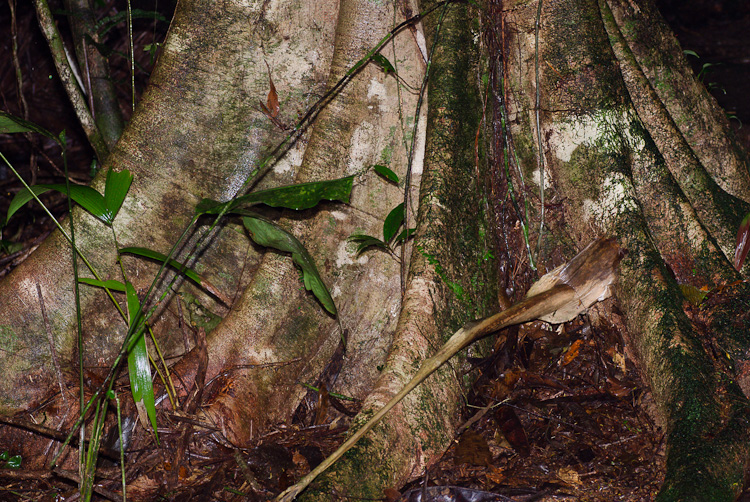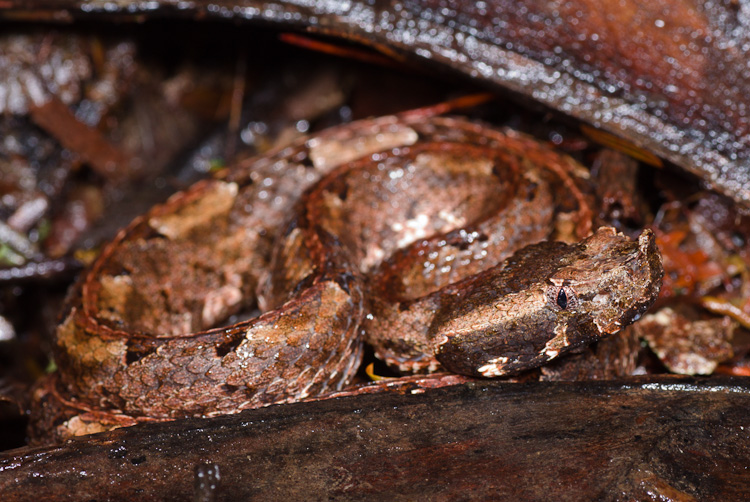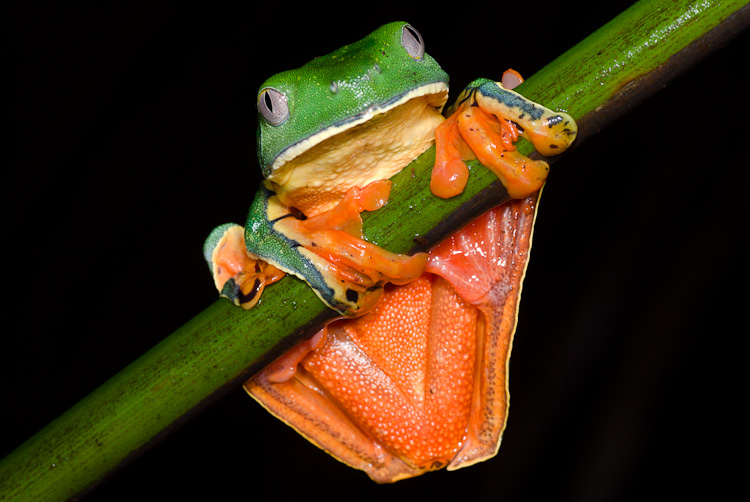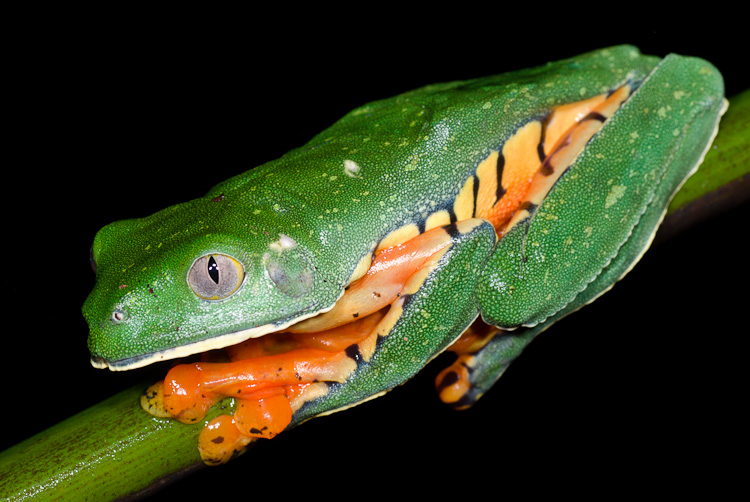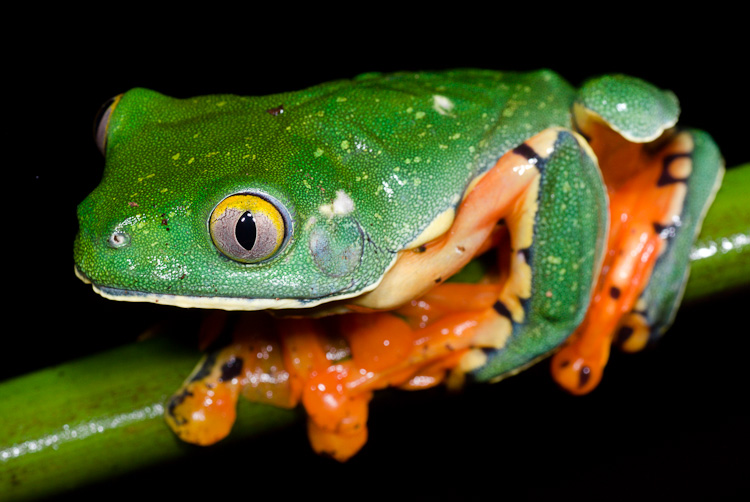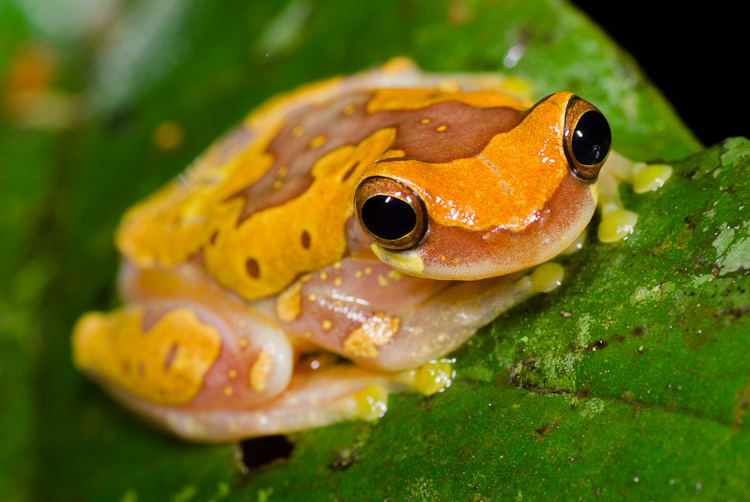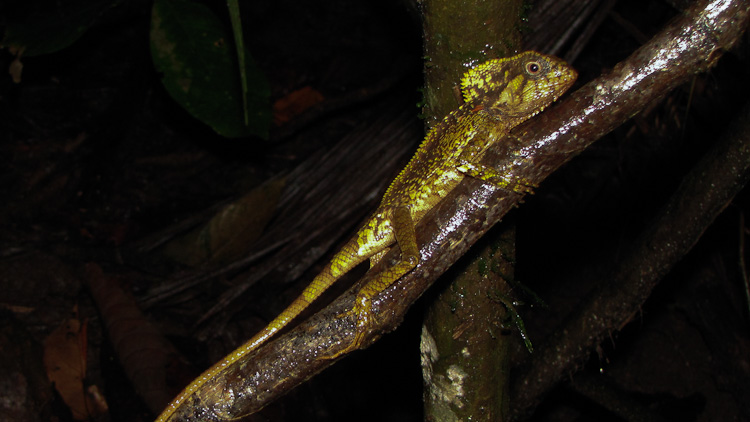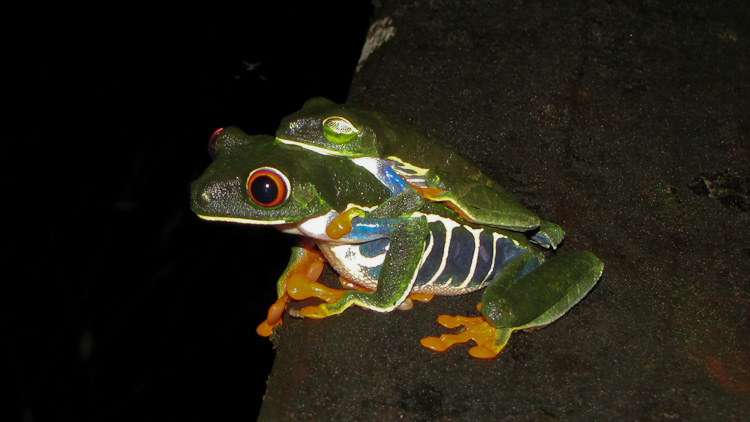Ohio University is located in Athens, Ohio, a charming "college" town in the southeast corner of the state. Compared to other areas of Ohio, the area is geographically rugged, with a dynamic topography. Many people refer to the area as being part of the Appalachian foothills. Technically speaking, Athens lies deep in Ohio's unglaciated plateau. This term is used to describe the area of the state that was never covered by the advance of enormous glaciers during times of cooling in the last 10,000-20,000 years. Since Athens avoided the glaciers, it retained its interesting and variable topography, as opposed to other flat areas such as western Ohio. Furthermore, the Athens area is highly forested when compared to other areas of Ohio. A few factors probably contributed to the current amount of forest cover in the area. For one, the rugged geography is not conducive to farming. Also, the federal government funded a few programs during the great depression to establish national forest areas. These programs employed impoverished youth to actively reforested many areas that had lost woody cover. Because of these initiatives in the 1930s, we now enjoy many beautiful forests in SE Ohio, such as the Wayne National Forest system, Zaleski State Forest, Hocking State Forest, etc. These forests are excellent for outdoor enthusiasts, such as hikers, herpers, and birders.
Unfortunately, I haven't been able to do any herping of late (insert laundry list of excuses), but I did participate in another Ornithology class field trip on the morning of September 25. Our group met at Irvine Hall, the Ohio University biology building, at 7:00 AM (yuck) on September 25. We quickly hopped in vans and headed out to the Lake Hope State Park / Zaleski State Forest area. It was a gorgeous, cool morning (60 degrees F, clear skies). We first scoped out the Lake Hope Furnace. At this spot, a small river is flanked by a forest on one side and a clearing on the other. The visibility is excellent, and we were fortunate to observe a ton of bird activity. In the clearing, we spotted or heard evidence of the following species:
-American Crows (calling)
-White-breasted Nuthatch
-American Goldfinches
-Blue Jays
-Red-shouldered Hawk (lifer)
-Grey Catbird
-Carolina Wren (calling)
-Orange-crowned Warbler (lifer)
Of these birds, I found the Grey Catbird particularly interesting. It has a distinctive call, much alike the "meowww!" of a cat. Also, the Orange-crowned Warbler was a neat find. I believe this is a migratory species that can only be found in Ohio when it is passing through. We also saw:
-Downy Woodpecker (calling)
-Black-throated Green Warbler (lifer)
-Magnolia Warbler (lifer)
-White-eyed Vireo (lifer)
-Yellow-throated Vireo
-Red-bellied Woodpecker
-Tufted Titmouse
-Song Sparrow
At around 8:45 AM, we followed the stream down toward where it flows into Lake Hope. Here we found a few species that are more strongly associated with water:
-Great Blue Heron
-10+ Wood Ducks
-Mallard
Unfortunately, at around 9:30 AM, I had to leave the group early and return to Athens for a club soccer game. We ended up tying the University of Dayton team 1-1 in a tough match. My parents came down for the game, which was pretty chill, so I got to hang out with them for the day. My Dad, a birder, was excited to see my list from the morning. Word, dude!
Cheers,
Brian
Sunday, September 26, 2010
Tuesday, September 21, 2010
Game of Thrones and HBO
I mentioned the upcoming A Game of Thrones TV series on HBO before. If you haven't read the books, please do so. Either way, check it out next spring. The project is a full go, currently in production, and looks amazing.
Also, if you haven't seen Boardwalk Empire, which premiered last Sun night on HBO - do so. Past products like The Wire, Sopranos and Deadwood, coupled with HBOs current commitment to developing new cutting edge shows will keep me coming back again and again.
BH
Also, if you haven't seen Boardwalk Empire, which premiered last Sun night on HBO - do so. Past products like The Wire, Sopranos and Deadwood, coupled with HBOs current commitment to developing new cutting edge shows will keep me coming back again and again.
BH
Monday, September 20, 2010
Another Woody Summer
I have mentioned before that I don't find many things as enjoyable as hopping into a canoe or kayak on a northern Michigan river and looking for turtles. It is a perfect way to spend a couple weekends during the heat of the summer.
This year I invited Carl Brune and his son Ryan up and we were able to plan a tight trip up north. It was quite the haul for the two of them, and I hope they enjoyed the trip.
They had come up to Detroit the night before, so we were able to get a real early start to our first day. We pulled up to the canoe livery sometime before noon, and were soon loaded up into a canoe and kayak. I had planned on bringing both dogs, Cid and Joy, but Joy had a sore paw and ended up having to stay home.
We started with a river my brother Brian and I had canoed last year with some luck. We managed to see a bunch of different animals, but struck out on wood turtles in the river.
Today would be different. We were on the river about an hour and I spotted a turtle on the bank.
Wood Turtle Glyptemys insculpta
It was nice to get that one off our backs. Cid was well behaved during the photo shoot. Later he would decide to try and jump out of the canoe. He quickly remembered he doesn't like swimming.
We didn't see any more woods here but saw plenty of snapping turtles and map turtles.
Map turtle Graptemys geographica
As well as a few basking water snakes.
All in all it was a great couple of days. The herp diversity was way down compared to the trip with my brother last year, but 8 wood turtles in 2 days is pretty amazing. It was also great to see Carl and Ryan, its hard to hook up as much these days.
BH
This year I invited Carl Brune and his son Ryan up and we were able to plan a tight trip up north. It was quite the haul for the two of them, and I hope they enjoyed the trip.
They had come up to Detroit the night before, so we were able to get a real early start to our first day. We pulled up to the canoe livery sometime before noon, and were soon loaded up into a canoe and kayak. I had planned on bringing both dogs, Cid and Joy, but Joy had a sore paw and ended up having to stay home.
We started with a river my brother Brian and I had canoed last year with some luck. We managed to see a bunch of different animals, but struck out on wood turtles in the river.
Today would be different. We were on the river about an hour and I spotted a turtle on the bank.
Wood Turtle Glyptemys insculpta
It was nice to get that one off our backs. Cid was well behaved during the photo shoot. Later he would decide to try and jump out of the canoe. He quickly remembered he doesn't like swimming.
We didn't see any more woods here but saw plenty of snapping turtles and map turtles.
Map turtle Graptemys geographica
We found a nice muddy flat with some snappers hanging out in it. Ryan spent some time catching the turtles, while letting his kayak and paddle float away.
Another map
We finished a long day, and headed to the campsite. Cid was enjoying the car while we slaved away and set up camp.
We were up early the next day, broke camp, and set off to our next river. This would be a new one for me and I was excited to get out there. We spent some time flipping logs in a wooded field but turned up a disappointing nothing. It poured on and off while driving to the next river, and we were wondering if the livery would even be open. Sure enough it was, and we were the only car in the parking lot when we pulled up. We took some time to eat a snack and pack up, but were on the river fairly shortly. It was maybe 5-10 minutes down river when I noticed an obvious wood turtle crawling out onto a log to bask. I got a very crappy shot off before it realized it was spotted and dove back down. We looked hard in the area but were unable to locate the turtle.
Wood Turtle
A while later I looked off to my right and saw an odd looking "rock" under the overhang of the bank. I quickly spied it with some binocs and realized it was a turtle. We looped back around against the current,
and luckily the turtle was still there. It was floating very oddly, bobbing unnaturally, and not at all bothered by the canoe approaching. I snapped a few shots and decided to hop in after it, wondering if it was dead.
I managed to swim right up to the turtle and quickly grabbed a very alive and fiesty turtle. An idea briefly popped into my head and my other hand shot out into the murky water - a second turtle was swimming away! I felt bad for disturbing this imperiled species, but it was amazing to witness evidence of reproduction.
Just shortly down the river, Carl spotted this basking on a river bank.
We were exploring that same bank, and I noticed another turtle hanging out.
The streak continued, soon we spotted another basking turtle.
We ended up seeing another basking wood turtle right there but it got away before we could get shots of it.
More map turtles were seen.
As well as a few basking water snakes.
All in all it was a great couple of days. The herp diversity was way down compared to the trip with my brother last year, but 8 wood turtles in 2 days is pretty amazing. It was also great to see Carl and Ryan, its hard to hook up as much these days.
BH
Wednesday, September 15, 2010
Back in the States, Back in the Field
I arrived back in the US on August 20 feeling tired but excited to be back in the States. The heatwave from the summer rendered the Midwest bone dry, but with a little work and luck I figured we could turn up a few animals. After being home for only a day or two, my Dad and I made a roadtrip up to Michigan to visit the Buckeyeherper and catch a baseball game. Naturally, we scheduled in some field time. We invited my brother David along, but he declined, saying that "we never find anything" when he comes out into the field with us. His loss, our gain, I suppose....
We checked out a neat fen in southeastern Michigan. The area supports some interesting fauna, including a few species of turtles, snakes, and frogs. Bob particularly enjoyed the pitcher plants and sundews, when he was finally able to spot them. Of course, Cid and Joy tagged along for the trip, who are always eager to get out into the field. After investigating the area for about an hour, Cid, Joy, and I hiked right past this little 1 year old snake. Fortunately, the more experienced Michigan herper made the spot:
Eastern massasauga rattlesnake (Sistrurus catenatus) found on August 22, 2010 at 6:35 PM.
This was Bob's first ever swamp rattler, and only my second, so suffice to say we were quite pleased. Too bad Dave wasn't along for the fun......
About a week later, I found myself back down in Athens, Ohio, gearing up for the start of another school year. On the August 28, the weather was looking prime to see pitvipers, so a buddy and I went down to a familiar hiking and flipping area to see what we could turn up. Unfortunately, the first find of the day was absolutely devastating. I've had zero luck over the years with one of Ohio's more interesting snakes, the Eastern hognose snake (Heterodon platyrhinos), and it was certainly in the back of my mind when we set out that morning. Imagine my dismay when we found one on the road around noon... but dead:
Bummer. We proceeded on to check a few flip spots before embarking on our hike. The first thing flipped is one of the usual suspects for southern Ohio, the Northern ringneck snake (Diadophis punctatus):
 On our hike, we saw a few lizard species. Unfortunately, the skinks were too quick for us to bring in hand. However, we did successfully photograph an Eastern fence lizard (Sceloporus undulatus) and an Eastern box turtle (Terrapene carolina):
On our hike, we saw a few lizard species. Unfortunately, the skinks were too quick for us to bring in hand. However, we did successfully photograph an Eastern fence lizard (Sceloporus undulatus) and an Eastern box turtle (Terrapene carolina):
 Our luck was pretty raw on the hike. We didn't see any vipers and both of us found our pants covered in hundreds of "micro" ticks: minuscule ticks less than 1 mm in diameter (I literally scraped hundreds off my ankles that night. Disgusting.).
Our luck was pretty raw on the hike. We didn't see any vipers and both of us found our pants covered in hundreds of "micro" ticks: minuscule ticks less than 1 mm in diameter (I literally scraped hundreds off my ankles that night. Disgusting.).
We checked a few other spots. A Northern black racer (Coluber constrictor) was too quick for us and bolted away. However, we flipped a nice Black rat snake (Scotophis spiloides), which promptly tagged Carl on the cheek:

Ouch. I also photographed this pretty snake:

Eastern milk snake (Lampropeltis triangulum).
After grabbing a bite to eat and hitting a few more spots as it got dark, we decided to roadcruise a few "new" roads that haven't been too successful in the past. It was a cooler night, with temperatures down into the 70s. At 8:30, right as it was getting dark, we were pleased to find this:
 A Northern copperhead (Agkistrodon contortrix), in situ. The rest of the night was fairly eventful, as we stopped for two more copperheads at 9:03 and 9:45. At around 10:30, we headed home, decently pleased with the day's activities.
A Northern copperhead (Agkistrodon contortrix), in situ. The rest of the night was fairly eventful, as we stopped for two more copperheads at 9:03 and 9:45. At around 10:30, we headed home, decently pleased with the day's activities.

 Three snake night... not bad!
Three snake night... not bad!
Unfortunately, I'm currently super busy with club soccer to spend much time in the field in search of herps. However, I did participate in a field trip for my Ornithology class on Saturday September 11. At three different localities, we saw over twenty species of birds, including a few lifers. First, at 7:15 AM, we saw a few local vultures hanging out on tops of houses along Grosvenor Road in Athens, OH:
-10+ Black vultures (Coragyps atratus) (lifer)
-2 Turkey vultures (Carthartes aura)
Next, we stopped off highway 686 along the Hocking River, down beneath the ridges. There we observed:
-2 Osprey (Pandion haliaetus) (lifer)
-American crows (Corvus brachyrhynchos)
-1 Belted kingfisher (Megaceryle alcyon)
-Mourning doves (Zenaida macroura)
-Killdeer (Charadrius vociferus)
-1 Pileated woodpecker (Dryocopus pileatus)
-1 Canada goose (Branta canadensis)
From around 8:00 AM to 10:00 AM, we hiked around the Ridges, an elevated ridgetop area that is a part of Ohio University's campus. There we observed:
-American robins (Turdus migratorius)
-1 Cedar waxwing (Bombycilla cedrorum) (lifer) "the bird that rocks," according to our prof
-1 Yellow-throated vireo (Vireo flavifrons) (lifer)
-1 Red-bellied woodpecker (Melanerpes carolinus)
-1 Downey woodpecker (Picoides pubescens)
-1 Carolina wren (Thryothorus ludovicianus)
-1 Caroline chickadee (Poecile carolinensis) (lifer)
-Blue jays (Cyanocitta cristata)
-Northern cardinals (Cardinalis cardinalis)
A few other species were seen by people in the group. However, I only listed the birds above that I was able to visually ID.
Hoping to get back out into the field soon....
Brian
We checked out a neat fen in southeastern Michigan. The area supports some interesting fauna, including a few species of turtles, snakes, and frogs. Bob particularly enjoyed the pitcher plants and sundews, when he was finally able to spot them. Of course, Cid and Joy tagged along for the trip, who are always eager to get out into the field. After investigating the area for about an hour, Cid, Joy, and I hiked right past this little 1 year old snake. Fortunately, the more experienced Michigan herper made the spot:
Eastern massasauga rattlesnake (Sistrurus catenatus) found on August 22, 2010 at 6:35 PM.
This was Bob's first ever swamp rattler, and only my second, so suffice to say we were quite pleased. Too bad Dave wasn't along for the fun......
About a week later, I found myself back down in Athens, Ohio, gearing up for the start of another school year. On the August 28, the weather was looking prime to see pitvipers, so a buddy and I went down to a familiar hiking and flipping area to see what we could turn up. Unfortunately, the first find of the day was absolutely devastating. I've had zero luck over the years with one of Ohio's more interesting snakes, the Eastern hognose snake (Heterodon platyrhinos), and it was certainly in the back of my mind when we set out that morning. Imagine my dismay when we found one on the road around noon... but dead:
Bummer. We proceeded on to check a few flip spots before embarking on our hike. The first thing flipped is one of the usual suspects for southern Ohio, the Northern ringneck snake (Diadophis punctatus):
 On our hike, we saw a few lizard species. Unfortunately, the skinks were too quick for us to bring in hand. However, we did successfully photograph an Eastern fence lizard (Sceloporus undulatus) and an Eastern box turtle (Terrapene carolina):
On our hike, we saw a few lizard species. Unfortunately, the skinks were too quick for us to bring in hand. However, we did successfully photograph an Eastern fence lizard (Sceloporus undulatus) and an Eastern box turtle (Terrapene carolina): Our luck was pretty raw on the hike. We didn't see any vipers and both of us found our pants covered in hundreds of "micro" ticks: minuscule ticks less than 1 mm in diameter (I literally scraped hundreds off my ankles that night. Disgusting.).
Our luck was pretty raw on the hike. We didn't see any vipers and both of us found our pants covered in hundreds of "micro" ticks: minuscule ticks less than 1 mm in diameter (I literally scraped hundreds off my ankles that night. Disgusting.).We checked a few other spots. A Northern black racer (Coluber constrictor) was too quick for us and bolted away. However, we flipped a nice Black rat snake (Scotophis spiloides), which promptly tagged Carl on the cheek:

Ouch. I also photographed this pretty snake:

Eastern milk snake (Lampropeltis triangulum).
After grabbing a bite to eat and hitting a few more spots as it got dark, we decided to roadcruise a few "new" roads that haven't been too successful in the past. It was a cooler night, with temperatures down into the 70s. At 8:30, right as it was getting dark, we were pleased to find this:
 A Northern copperhead (Agkistrodon contortrix), in situ. The rest of the night was fairly eventful, as we stopped for two more copperheads at 9:03 and 9:45. At around 10:30, we headed home, decently pleased with the day's activities.
A Northern copperhead (Agkistrodon contortrix), in situ. The rest of the night was fairly eventful, as we stopped for two more copperheads at 9:03 and 9:45. At around 10:30, we headed home, decently pleased with the day's activities.
 Three snake night... not bad!
Three snake night... not bad!Unfortunately, I'm currently super busy with club soccer to spend much time in the field in search of herps. However, I did participate in a field trip for my Ornithology class on Saturday September 11. At three different localities, we saw over twenty species of birds, including a few lifers. First, at 7:15 AM, we saw a few local vultures hanging out on tops of houses along Grosvenor Road in Athens, OH:
-10+ Black vultures (Coragyps atratus) (lifer)
-2 Turkey vultures (Carthartes aura)
Next, we stopped off highway 686 along the Hocking River, down beneath the ridges. There we observed:
-2 Osprey (Pandion haliaetus) (lifer)
-American crows (Corvus brachyrhynchos)
-1 Belted kingfisher (Megaceryle alcyon)
-Mourning doves (Zenaida macroura)
-Killdeer (Charadrius vociferus)
-1 Pileated woodpecker (Dryocopus pileatus)
-1 Canada goose (Branta canadensis)
From around 8:00 AM to 10:00 AM, we hiked around the Ridges, an elevated ridgetop area that is a part of Ohio University's campus. There we observed:
-American robins (Turdus migratorius)
-1 Cedar waxwing (Bombycilla cedrorum) (lifer) "the bird that rocks," according to our prof
-1 Yellow-throated vireo (Vireo flavifrons) (lifer)
-1 Red-bellied woodpecker (Melanerpes carolinus)
-1 Downey woodpecker (Picoides pubescens)
-1 Carolina wren (Thryothorus ludovicianus)
-1 Caroline chickadee (Poecile carolinensis) (lifer)
-Blue jays (Cyanocitta cristata)
-Northern cardinals (Cardinalis cardinalis)
A few other species were seen by people in the group. However, I only listed the birds above that I was able to visually ID.
Hoping to get back out into the field soon....
Brian
New Blood on the BH Blog
Earlier this summer, the Buckeyeherper asked me to spice up his blog a bit by by sharing some of my adventures from the field. As an undergraduate biology student, I was lucky enough to spend the summer abroad in the Heredia Province of Costa Rica studying herpetofauna. With this trip under my belt, we both thought it would be cool to post some of my adventures on here. Although this was undoubtedly the greatest experience of my life, I was super busy and at times quite stressed out. Now that I'm comfortably back in the States, I'm going to take him up on the offer and share my experiences and some of the knowledge I accrued during a 10 week trip abroad. Things I plan on posting about could include but are not delimited to herping, traveling, or (why the hell not) even birding!
Cheers,
Brian
Cheers,
Brian
Thursday, September 9, 2010
Costa Rica: Atlantic Slope and Conclusion
Check out Costa Rica Part I, Part II, Part III, Part IV and Part V.
We were up and at em early again to make breakfast and hit the trails. We set out first to check out a nearby swamp we had spotted a few mud turtles at but were never able to get pics of. One of them happened to be easily within reach today.
Kinosternon leucostomum
We hiked a few new trails for a while without much luck. I was rustling through some downed branches and leaves and noticed a small frog hopping the in the litter that was different from any we had seen so far.
It happened to be the least common of La Selva's dart frogs, Phyllobates lugubris.
There were other small groups of people out and about the grounds of La Selva the last few days. Many of the summer and seasonal researchers had departed but there was a group of entomologists that we had chatted with here and there. They had seen a few snakes recently, primarily the local Porthidium I was hoping for. Brian had seen almost as many of them as he had of the aspers the last 2 months and ensured me one would turn up. Usually they were a bit more common a few miles out at his primary research site but I was hopeful. Anyway, we had chatted them up for a while early on in the hike, but while we were photographing the above dart frog, they returned. They had hiked a good 20 minutes or so out of their way to find us on the intricate trail system. Luckily, we had been photographing the frog for a little while and hadn't moved onto another trail. They had brought us a present - a small snake that turned up while they were sifted through leaf litter for insects. It turned out to be a neat little critter, even for a Ninia.
Ninia maculata
Moving on we found a likely looking glass frog spot.
And noticed some Norops limifrons predatory behavior.
The sun popped out and on cue so did the Ameiva festivus
We got back to the main compound for our usual afternoon routine. I noticed this large iguana hanging around and couldn't resist shooting him a bit.
This was to be our last morning at La Selva. I was feeling bummed about not seeing some other stuff, primarily the last dart frog. I couldn't take it easy, despite my fatigue. I rented one of the mountain bikes to ride out a ways to where the dart frogs are a bit more common. I hiked around for a couple hours and stuck out. I had to pull out the gear and shoot a Craugastor bransfordii on the ground to make up for my previous slight though.
We headed out for our night hike feeling very drained.
Craugastor sp. (fitzingeri?)
We spent much of the time checking trails where eyelash vipers are reportedly more common. No luck there of course, but we spotted some new things for me.
Sibon longifrenis
And finally, on my 7th night in Costa Rica, I saw my first red eye (have you noticed the lack of rain at night?).
Agalychis saltator
Norops lemurinis
It was a bit of a slower night. We saw many of things we had already seen, a couple other Sibon and were working our way back. In one of the swamps I noticed a decent sized snake moving in the trees. Imagine our suprise to find a young Pseustes active at night.
Pseustes poecilonotus
We got up early with plans to depart La Selva. Our other plans ended up falling through as well so we decided to just stay for our fourth and last night knowing there was plenty more to discover. Brian had to get back here tomorrow anyway for his last week in the country and to work a little more on his project. We decided to forgo further travel disasters and just keep things simple. We changed tactics a bit, renting bikes and riding the 30 minutes out to Brian's study site where Porthidium seemed to be everywhere.
Dendrobates auratus
The paved trail ended and we had to hoof it a ways on foot as well. We turned up this neat turtle on the trail.
Rhinoclemmys annulata
We didn't get the snakes we wanted, but being in a different area provided plenty of opportunities to photograph new frogs that were more common in these sections.
Pristimantis cerasinus
Craugastor noblei
Craugastor talamancae
We were heading back to our bikes along a different trail, chatting and enjoying the trail when we noticed a green twig bolt from the trail 10 yards in front of us. It took to the trees in a stand of green palms and vanished. It was definitely a Leptophis but we weren't able to ID it to a species. During our prolonged search, we turned up a new toad.
Incilius melanochlorus
We got back for our afternoon routine, pulled of the boots and decided to relax a bit. I wanted to photograph a few of the sites around La Selva so we slowly wandered over to a nearby trail. Again on the trail was a green stick, but we didn't let it catch us sleeping this time.
Leptophis depressirostris
We were relaxing before my last La Selva dinner, and I started to hear a few raindrops. This would have been our fourth night here, and we had a slight drizzle the first night, but not another rain drop since. Well the heavens opened on us this afternoon. I started to get pretty excited about it, Brian started to get a little grumpy, complaining about getting wet, wearing a poncho, etc. I managed to get him to snap out of it quickly, and we wolfed dinner down and headed out in the rain. It was really pouring and I was hoping it would bring down some more Agalychis and Brian's holy grail, Cruziohyla, which he had been pining over all week.
Soon after setting out, Brian called me over with a smug grin and told me to find the animal. I knew it had to be something that wasn't at risk for escaping so I scanned the ground for coiled vipers.
Score! (I needed help...)
Porthidium nasutum
It was only a few minutes later when Brian started screaming. I turned around to check out his side of the trail and immediately noticed this beast sitting on a branch.
Cruziohyla calcarifer
Lots of high fives around after that. It really started to pour now, but I soon spotted another new frog for me on my side of the trail.
Dendropsophus ebrecattus
My camera took about 3 minutes of hard rain for the frog, and then died. I didn't know actually, but a few minutes later we spotted the lizard I had been hoping for all trip.
Corytophanes cristattus, taken with Brian's camera. Mine would turn on, focus, fire all my flashes and then just record a black screen of death. I tried multiple fixes in the field, without help.
It was ok though. It had been a good night. We enjoyed our hike back, the rain now stopped, without much else spotted. We hit a swamp that had been very good to us, and I finally saw my other red eye.
Agalychis callidryas
Which ended my trip. We turned in around 1, and planned to get up at 630 for breakfast. There was a quick car key scare in the morning which delayed my departure. I was super worried about being able to make the drive back actually within my allotted time and getting the car back, through security, etc. It was nothing to worry about though, and the drive to San Jose was for once easy and as planned.
My 1 hr layover in Fort Lauderdale which involved getting through customs, then back through security was a bit more sketchy (how did the airline let me book it?) but they actually held the door open so I could get on the plane.
I gave Brian a hard time throughout the trip, but it's mainly me just teasing my kid brother. Without him the trip wouldn't have happened (I would have gone to AZ) or been nearly as enjoyable. We invited the middle brother along, but he declined because we weren't going to be "doing anything fun, like ziplining and rafting". I think we had a fracking blast and I can't wait to get back. I learned some valuable travel lessons in the country and know I have just started to scratch the surface of its herp diversity.
Thanks for sticking with me.
Check out Costa Rica Part I, Part II, Part III, Part IV and Part V.
We were up and at em early again to make breakfast and hit the trails. We set out first to check out a nearby swamp we had spotted a few mud turtles at but were never able to get pics of. One of them happened to be easily within reach today.
Kinosternon leucostomum
We hiked a few new trails for a while without much luck. I was rustling through some downed branches and leaves and noticed a small frog hopping the in the litter that was different from any we had seen so far.
It happened to be the least common of La Selva's dart frogs, Phyllobates lugubris.
There were other small groups of people out and about the grounds of La Selva the last few days. Many of the summer and seasonal researchers had departed but there was a group of entomologists that we had chatted with here and there. They had seen a few snakes recently, primarily the local Porthidium I was hoping for. Brian had seen almost as many of them as he had of the aspers the last 2 months and ensured me one would turn up. Usually they were a bit more common a few miles out at his primary research site but I was hopeful. Anyway, we had chatted them up for a while early on in the hike, but while we were photographing the above dart frog, they returned. They had hiked a good 20 minutes or so out of their way to find us on the intricate trail system. Luckily, we had been photographing the frog for a little while and hadn't moved onto another trail. They had brought us a present - a small snake that turned up while they were sifted through leaf litter for insects. It turned out to be a neat little critter, even for a Ninia.
Ninia maculata
Moving on we found a likely looking glass frog spot.
And noticed some Norops limifrons predatory behavior.
The sun popped out and on cue so did the Ameiva festivus
We got back to the main compound for our usual afternoon routine. I noticed this large iguana hanging around and couldn't resist shooting him a bit.
This was to be our last morning at La Selva. I was feeling bummed about not seeing some other stuff, primarily the last dart frog. I couldn't take it easy, despite my fatigue. I rented one of the mountain bikes to ride out a ways to where the dart frogs are a bit more common. I hiked around for a couple hours and stuck out. I had to pull out the gear and shoot a Craugastor bransfordii on the ground to make up for my previous slight though.
We headed out for our night hike feeling very drained.
Craugastor sp. (fitzingeri?)
We spent much of the time checking trails where eyelash vipers are reportedly more common. No luck there of course, but we spotted some new things for me.
Sibon longifrenis
And finally, on my 7th night in Costa Rica, I saw my first red eye (have you noticed the lack of rain at night?).
Agalychis saltator
Norops lemurinis
It was a bit of a slower night. We saw many of things we had already seen, a couple other Sibon and were working our way back. In one of the swamps I noticed a decent sized snake moving in the trees. Imagine our suprise to find a young Pseustes active at night.
Pseustes poecilonotus
We got up early with plans to depart La Selva. Our other plans ended up falling through as well so we decided to just stay for our fourth and last night knowing there was plenty more to discover. Brian had to get back here tomorrow anyway for his last week in the country and to work a little more on his project. We decided to forgo further travel disasters and just keep things simple. We changed tactics a bit, renting bikes and riding the 30 minutes out to Brian's study site where Porthidium seemed to be everywhere.
Dendrobates auratus
The paved trail ended and we had to hoof it a ways on foot as well. We turned up this neat turtle on the trail.
Rhinoclemmys annulata
We didn't get the snakes we wanted, but being in a different area provided plenty of opportunities to photograph new frogs that were more common in these sections.
Pristimantis cerasinus
Craugastor noblei
Craugastor talamancae
We were heading back to our bikes along a different trail, chatting and enjoying the trail when we noticed a green twig bolt from the trail 10 yards in front of us. It took to the trees in a stand of green palms and vanished. It was definitely a Leptophis but we weren't able to ID it to a species. During our prolonged search, we turned up a new toad.
Incilius melanochlorus
We got back for our afternoon routine, pulled of the boots and decided to relax a bit. I wanted to photograph a few of the sites around La Selva so we slowly wandered over to a nearby trail. Again on the trail was a green stick, but we didn't let it catch us sleeping this time.
Leptophis depressirostris
We were relaxing before my last La Selva dinner, and I started to hear a few raindrops. This would have been our fourth night here, and we had a slight drizzle the first night, but not another rain drop since. Well the heavens opened on us this afternoon. I started to get pretty excited about it, Brian started to get a little grumpy, complaining about getting wet, wearing a poncho, etc. I managed to get him to snap out of it quickly, and we wolfed dinner down and headed out in the rain. It was really pouring and I was hoping it would bring down some more Agalychis and Brian's holy grail, Cruziohyla, which he had been pining over all week.
Soon after setting out, Brian called me over with a smug grin and told me to find the animal. I knew it had to be something that wasn't at risk for escaping so I scanned the ground for coiled vipers.
Score! (I needed help...)
Porthidium nasutum
It was only a few minutes later when Brian started screaming. I turned around to check out his side of the trail and immediately noticed this beast sitting on a branch.
Cruziohyla calcarifer
Lots of high fives around after that. It really started to pour now, but I soon spotted another new frog for me on my side of the trail.
Dendropsophus ebrecattus
My camera took about 3 minutes of hard rain for the frog, and then died. I didn't know actually, but a few minutes later we spotted the lizard I had been hoping for all trip.
Corytophanes cristattus, taken with Brian's camera. Mine would turn on, focus, fire all my flashes and then just record a black screen of death. I tried multiple fixes in the field, without help.
It was ok though. It had been a good night. We enjoyed our hike back, the rain now stopped, without much else spotted. We hit a swamp that had been very good to us, and I finally saw my other red eye.
Agalychis callidryas
Which ended my trip. We turned in around 1, and planned to get up at 630 for breakfast. There was a quick car key scare in the morning which delayed my departure. I was super worried about being able to make the drive back actually within my allotted time and getting the car back, through security, etc. It was nothing to worry about though, and the drive to San Jose was for once easy and as planned.
My 1 hr layover in Fort Lauderdale which involved getting through customs, then back through security was a bit more sketchy (how did the airline let me book it?) but they actually held the door open so I could get on the plane.
I gave Brian a hard time throughout the trip, but it's mainly me just teasing my kid brother. Without him the trip wouldn't have happened (I would have gone to AZ) or been nearly as enjoyable. We invited the middle brother along, but he declined because we weren't going to be "doing anything fun, like ziplining and rafting". I think we had a fracking blast and I can't wait to get back. I learned some valuable travel lessons in the country and know I have just started to scratch the surface of its herp diversity.
Thanks for sticking with me.
Check out Costa Rica Part I, Part II, Part III, Part IV and Part V.
Subscribe to:
Comments (Atom)

